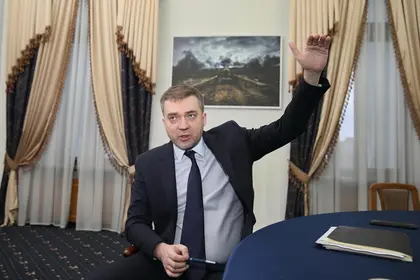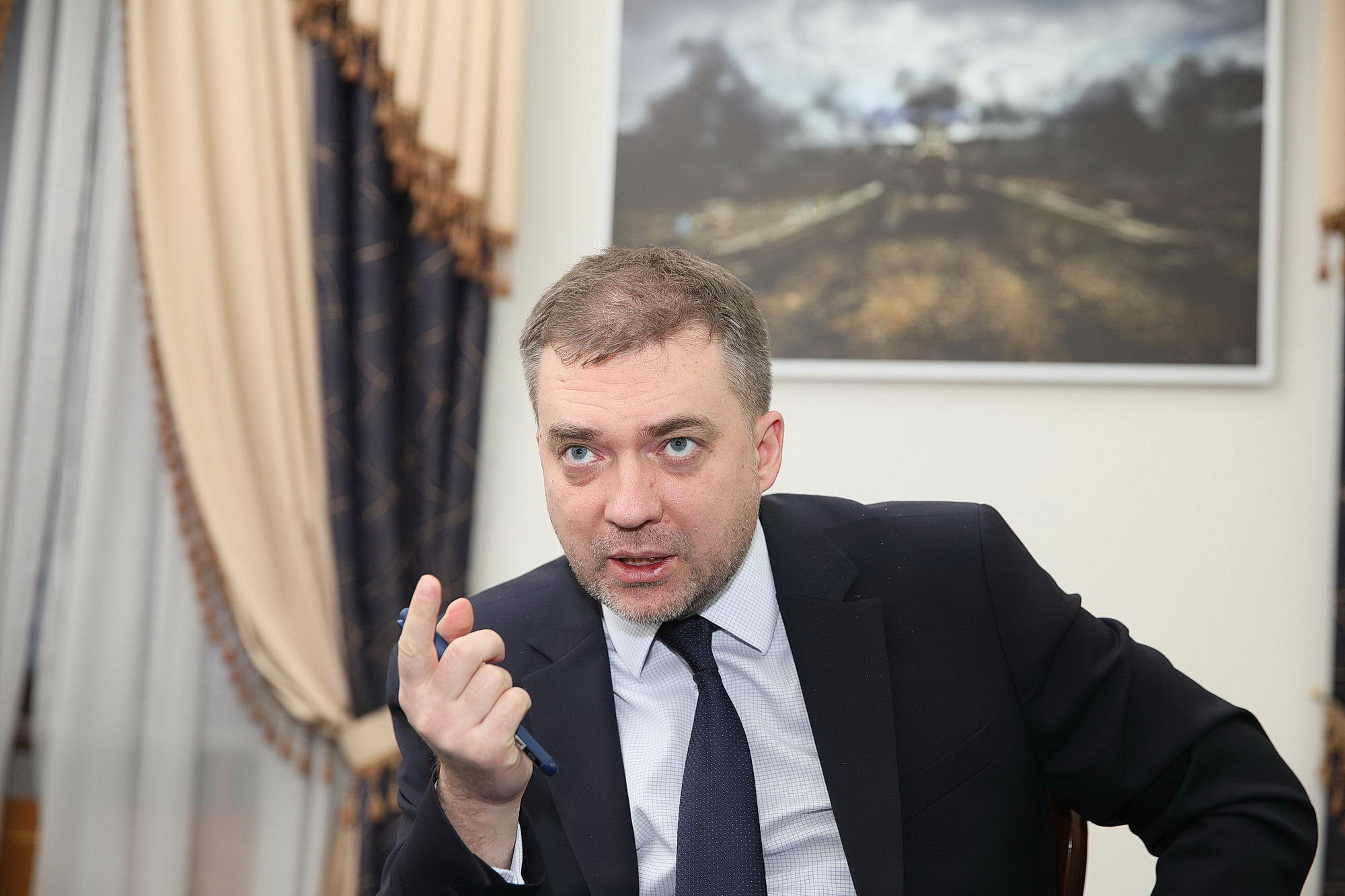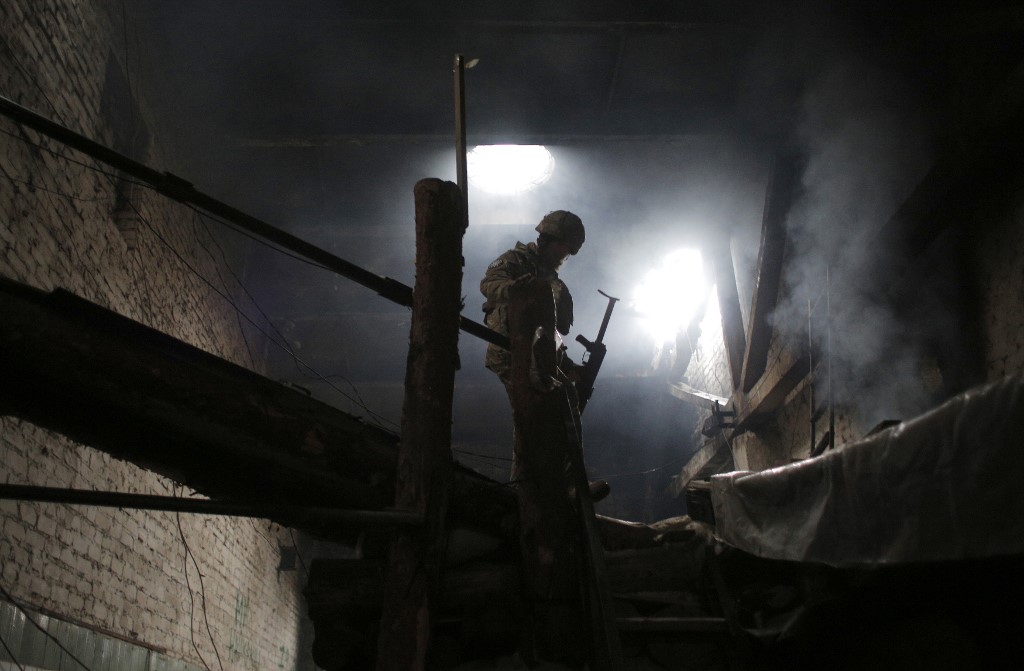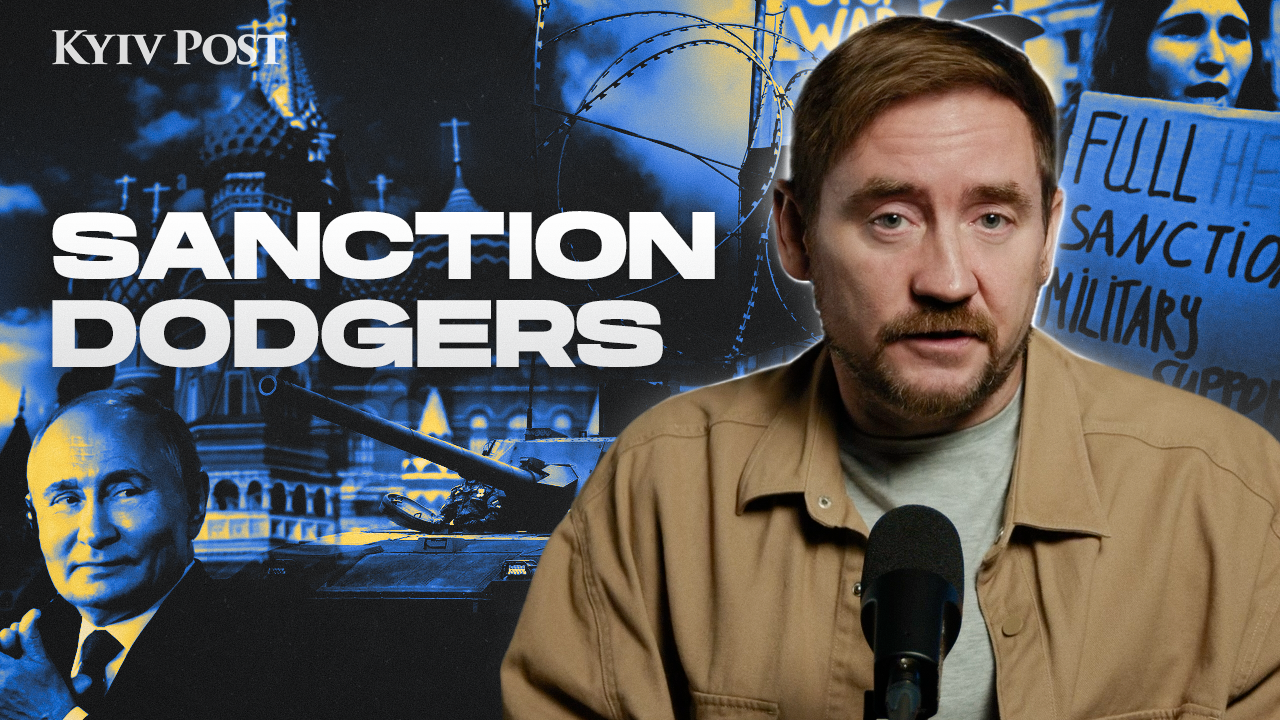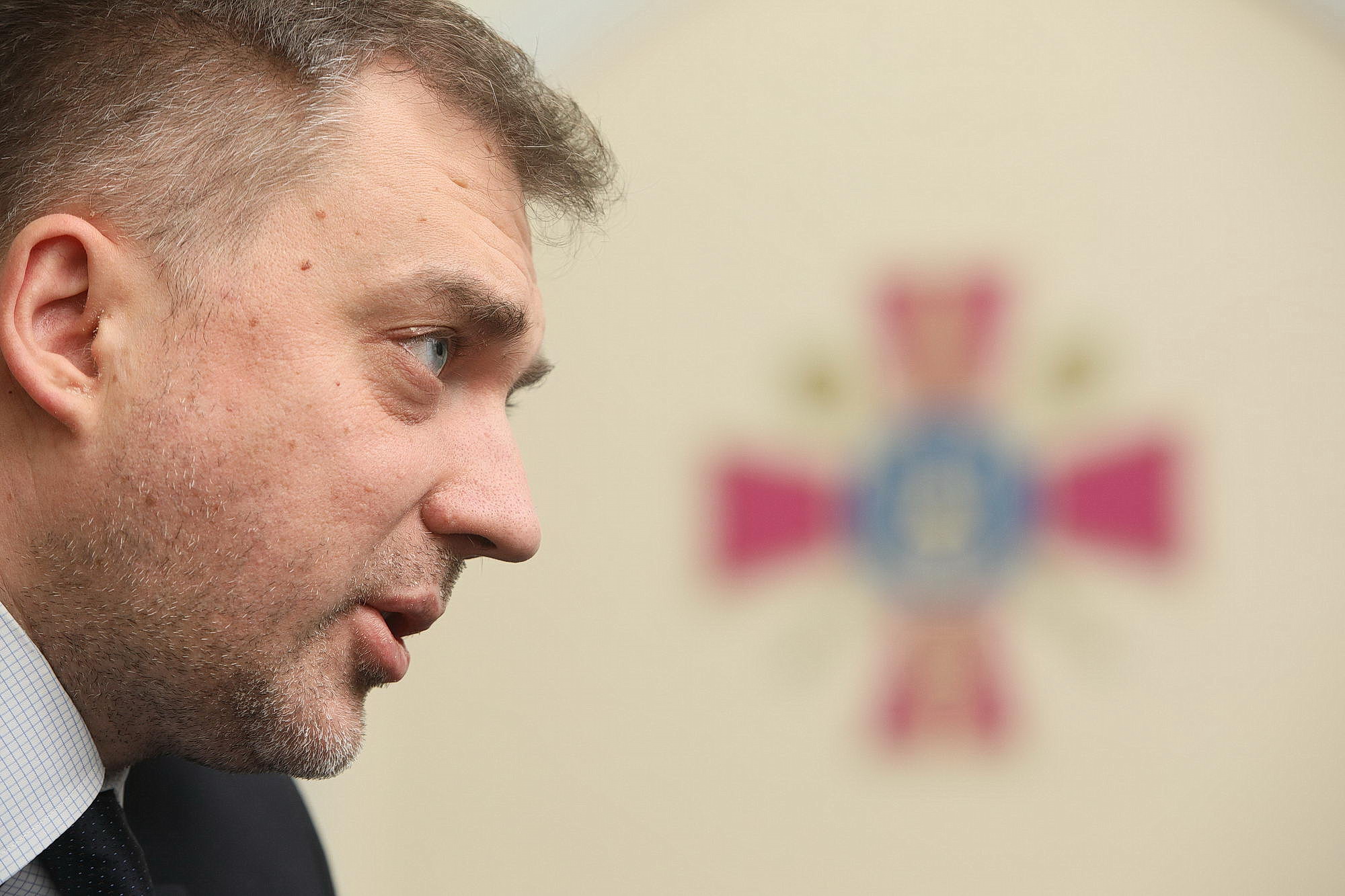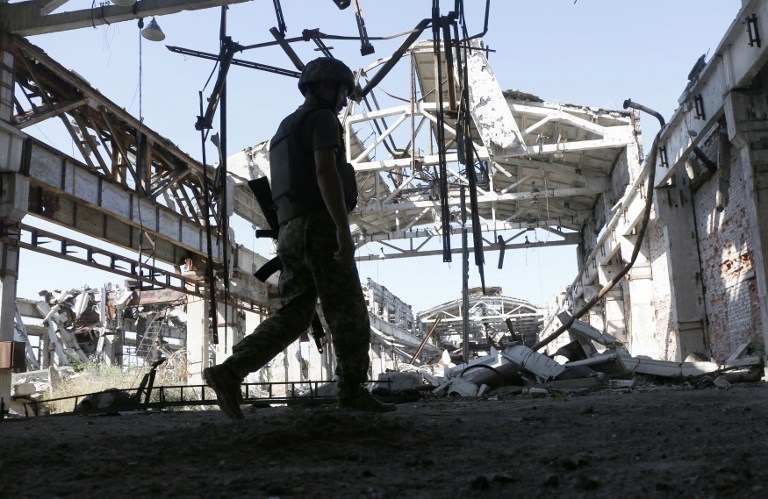The deadline is fast approaching: Ukraine has only 11 months to complete a long list of NATO-oriented defense reforms.
The point man for the task is Andriy Zagorodnyuk, the most unusual defense minister in the history of independent Ukraine.
At 42, Zagorodnyuk is the youngest man to ever hold the position. He is also the first truly civilian defense minister under the country’s new, westernized national security legislation. Unlike bureaucrat generals from the stagnant post-Soviet military establishment, he has a strong background in business management.
Zagorodnyuk is optimistic about his country’s eventual success but admits Ukraine’s military sector has plenty of things to fix: chronic plundering, sub-standard military infrastructure, unsatisfactory conditions for service members and poor social protection for personnel.
The minister knows these problems well: He made his name as a volunteer delivering aid to Ukrainian troops fighting in Donbas, and as a vocal advocate of reforms at the Ministry of Defense.
His appointment by President Volodymyr Zelensky in late August was a promising step toward military reform.
Now, almost six months later, Zagorodnyuk promises to present the first results of his work soon.
In a Jan. 30 interview, he told the Kyiv Post he plans to implement 11 key improvements in the immediate future.
His plans include unsealing most of Ukraine’s heavily-classified state military procurement plans, something that should have been done years — if not decades — ago. The thick blanket of secrecy has allowed corruption to corrode military acquisitions. Zagorodnyuk aims to inject transparency into the defense ministry, allowing oversight from the press and civil society.
“Increasing transparency is one of our foremost goals,” he said.
The ministry will also roll out a new national defense strategy that will continue to steer the country toward NATO membership after 2020.
Because adopting basic NATO practices is far from enough to fix the post-Soviet army’s perennial problems, Zagorodnyuk also says he plans to roll out reforms designed to boost the appeal of military service in Ukraine.
After that, he says the military can finally “say goodbye to the Soviet Union forever.”
Defined by strategy
Despite numerous flaws and years of delays, Zagorodnyuk says the 2020 reform is on track to be completed on time.
Much of Ukraine’s military regulations, Defense Ministry structures, and national security legislation have already been synchronized with NATO.
This year, Ukraine is expected to complete the transition to a NATO-compatible structure for military staff. It must also transition to a leadership structure in which the General Staff of the Armed Forces is charged with the generation and deployment of forces, the Joint Operative Headquarters has immediate control of the battlefield and the civilian-led Ministry of Defense is responsible for budget management.
Another extremely belated change is the full-fledged introduction of a U.S. Army-style core of non-commissioned forces (NCOs).
But first things first: In February or early March, Zagorodnyuk will present a new security strategy and defense policy concepts.
Now, everything happening in the defense sector will be defined by a systematic vision rather than corrupt business interests or half-blind bureaucratic mayhem.
“Back in the day, we had an enormous gap between politics and reality,” the minister said.
“We used to have all those doctrines, concepts, a gap in between (them), and then (defense) programs and budgets for periods of 1-2 years. Those things had no interconnection amongst themselves.
“Now we are going to have a strict cause and effect relationship between the strategy, the (defense) budget, and state defense procurement. Why are we purchasing a particular thing? Because this is envisaged in our defense strategy. All we do will be based on a strategy.”
In the same way, Zagorodnyuk is developing detailed strategies for military branches, with plans for the Naval Forces outlined until 2035 and a long-term Air Force plan (to be released soon) that will shape the country’s three-year military procurement plans.
While these frameworks won’t change Ukraine’s path toward NATO membership, they do signal a change of course, such as with the introduction of an Estonia-style territorial defense (to be created within the next three years) and a growing number of civilians involved in national defense.
“This is a key point — we don’t want to create a military force that is the same as our adversary’s but smaller,” Zagorodnyuk said.
Transparent procurement
The new approach to defense procurement is meant to bring balance and strategy-based priorities.
But there will never be enough money for everything the Armed Forces need, according to Zagorodnyuk.
For that reason, the defense ministry will dismantle the obsolete, Soviet system of State Defense Acquisition in favor of unified defense acquisition plans.
Now, multimillion-dollar procurement orders will cease to be compiled by just a few officials with almost no oversight.
“Before now, the scheme was rather simple,” Zagorodnyuk said.
“The minister of defense would simply sign off on the procurement order — because he would not be able to read through the (whole big) paper and get all the answers. And normally it was done at the very last moment when there was no time left.”
Zagorodnyuk says there will now be an independent task force to inspect and approve all acquisitions.
“This is the first time in our history that we will have such a thing working (in the ministry),” he said.
In the future, the ministry will also largely refrain from using non-competitive bids, which often result in firms obtaining contracts that have conflicts of interests.
The ministry has also finally started working with the NATO Support and Procurement Agency (NSPA), the alliance’s defense procurement platform. Ukraine joined it as far back as 2016, but, up until very recently, it made no progress in implementing it.
According to Zagorodnyuk, the ministry recently made its first minor trial purchase from NSPA, and it intends to keep working with the highly-trusted, corruption-resistant platform when necessary.
“We intend to purchase (from NSPA) those things that are not produced in Ukraine and that we can’t buy under intergovernmental agreements,” the minister said.
“That is anything we need to get rather quickly — some specialized hardware or equipment… We can make non-disclosed procurement deals, knowing that NSPA runs the procurement process in a proper way, including comparison studies. This is a very good instrument. Additionally, with access to the (NSPA) database, we will always be able to assess the adequacy of our own prices. Because our prices are higher than those abroad.”
But the defense minister stresses that all purchases made from NSPA would not be detrimental to Ukrainian arms producers.
Secrecy dropped
Zagorodnyuk also affirmed that the press and civil society would have full access to tenders and bidding information.
In general, he added, the Defense Ministry is moving toward extensive declassification of previous procurement plans riddled with corruption and covered by indiscriminate secrecy, which “will surely be of big interest.”
Only the most sensitive information will remain classified.
But when it comes to purchasing more conventional hardware or equipment, such as armored personnel vehicles, excessive classification makes no sense, according to him.
As of now, the new bill on state defense procurement has passed its first reading in the Verkhovna Rada, and Zagorodnyuk hopes the president will sign it into law in February.
Once it goes into effect, a new defense acquisition plan for 2021 will be created in compliance with the new rules.
The new legislation is expected to finally stop the country’s defense industry from being a goldmine for top officials. Endemic corruption in the defense sector has placed a heavy burden on Ukraine’s shoulders amid an ongoing war with Russia.
In the past few years, Ukraine experienced a series of major defense corruption scandals that cast light on the grim situation in the sector and caused a huge public uproar.
In the biggest, in early 2019, saw top defense policymaker Oleh Hladkovsky removed from office after facing accusations of patronizing large-scale embezzlement in military procurement. The scandal may even have delivered the kiss of death to then-President Petro Poroshenko’s campaign for reelection.
Hladkovsky was arrested in October 2019 and later granted bail. According to Ukrainian Prosecutor General Ruslan Riaboshapka, the former official’s case is expected to go to court soon.
Meanwhile, defense sector experts polled by the Kyiv Post give a generally positive appraisal of the Zagorodnyuk team’s anti-corruption initiatives.
“In terms of… combating corruption and risk management, the situation in the Ministry of Defense has significantly improved,” Taras Yemchura, an independent anti-graft expert, said.
“And in the retrospective view, I can’t recall any corruption scandal involving the current Defense Ministry leadership.
Yemchura also called the upcoming procurement bill “rather progressive” and able “to change a lot in defense acquisition.”
Olena Tregub, secretary-general of the Independent Defense Anti-Corruption Committee (NAKO), a Kyiv-based think tank also noted the progress in combating corruption under Zagorodnyuk.
“What we are observing is that the current leadership has a very goal-oriented, hands-on approach regarding concrete corruption charges,” she told the Kyiv Post.
“They created several working groups on the top five corruption risks, and they are inviting us and other civil society experts because they want to change something in the short run.
“Having said that, I recognize and I see that, because they are new people from outside the system, they find their environment challenging. Because there are a lot of people from the system that are resisting the changes and the anti-corruption reform.”
Motivation to stay
Zagorodnyuk came to office at a time when thousands of soldiers and officers were leaving the military out of dissatisfaction with poor social security, the reappearance of Soviet-style disorder and a lack of career opportunities.
As of now, the situation has changed slightly — according to the ministry, nearly 34,000 new service contracts were signed in 2019, while nearly 10 percent of Ukraine’s 250,000 servicepersons left for various reasons.
Nonetheless, the Armed Forces still have a difficult time persuading career service members to stay and attracting fresh recruits.
“We drew up good internal evaluation reports on demotivating factors — why do people leave? Now we know for sure why. In short, because they do not get what they expected when they joined.”
In this regard, Zagorodnyuk also has a plan to make military careers more attractive.
“The lack of ascension plans in the military is what makes us significantly different from NATO. (The Alliance) has them — and a service member has a sort of understanding of where his or her career will go, and he or she has choices to make. But we don’t have any such things.”
In many ways, the dissatisfaction comes from poor leadership by commanding officers. To improve conditions, Zagorodnyuk created a commission of veterans to inspect military units.
A skilled inspector can find out if a formation has an incompetent commander almost immediately. The ministry insists on replacing such commanders with younger, more progressive officers.
Among other pressing problems, the minister also mentioned the severe lack of housing for personnel.
Up to 45,000 soldiers and officers are waiting in decades-long queues for apartments, a problem that would take at least Hr 40-45 billion ($1.1 billion) to solve.
The ministry has made a small dent in the problem: In the past two months, it purchased 200 apartments with plans to buy 100 more — but that is just a drop in the ocean.
To accelerate the solution, the ministry plans to support subsidized loans for military personnel and to increase monetized compensation for housing rent.
Yet another bloodsucker is the military’s endemic bureaucracy, the butt of soldiers’ bitter jokes about “UPA” — “the Ukrainian Paper Army.” Zagorodnyuk plans to finally launch an e-document project in the Airborne Forces in hopes of reducing red tape.
With all the plans to repair Ukraine’s desperately obsolete military infrastructure, it’s also imperative not to ignore bad service conditions.
“This is no mean feat,” the minister said.
“Because some of our brigades still reside under horrific conditions, we plan to build several good infrastructure objects — just for everyone to see that we also can have a base in line with NATO standards.”
First up is Shyrokiy Lan, a giant boot camp in Mykolaiv Oblast with a reputation for horrible living conditions. Zagorodnyuk says it will be completely repaired and finally equipped with decent premises for training and lodging.
The ministry also plans to construct two brand new brigade-level bases in two Donbas cities — Severodonetsk and Mariupol.
By the end of February, Zagorodnyuk intends to present his full improvement plan, which he says will be completely implemented by the end of 2020.
Hopefully, this will stop the torrent of experienced officers leaving. Zagorodnyuk sees one of his core tasks as encouraging the most valued military specialists to stay on for as long as possible.
You can also highlight the text and press Ctrl + Enter


